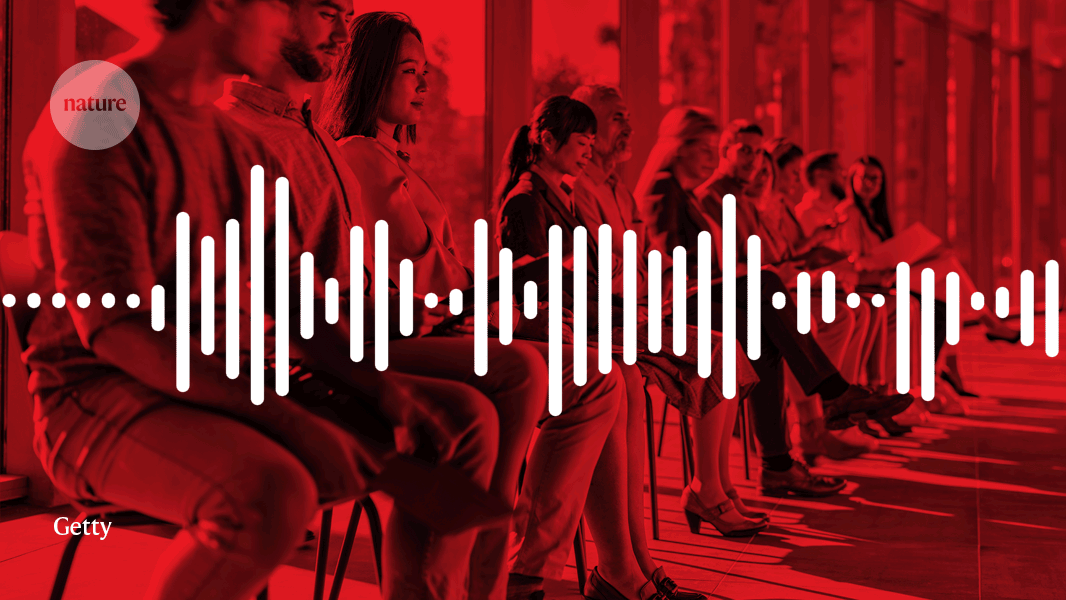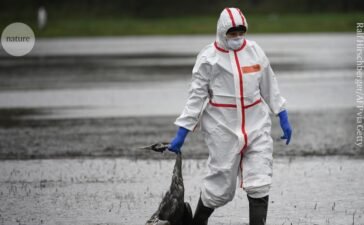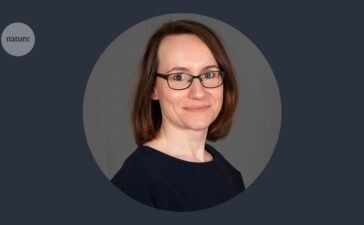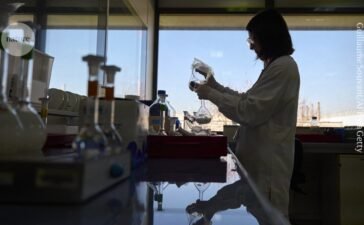Julie Gould 00:09
Hello and welcome to Working Scientist, a Nature Careers podcast. I’m Julie Gould.
This is the second episode of a series about hiring and getting hired in science.
In 2024 the Nature Careers team ran a survey to try and understand what the scientists who are hiring scientists know about hiring, and how they do it.
So in this episode, we will look at some of the hiring processes in place in academia, how recruiters work in industry, and what one research institution is doing to take the load off group leaders when it comes to recruiting.
When I started trying to explore the different processes of hiring between academia and industry, I found it really hard to try and summarize what the main differences were.
But Tina Persson, a careers coach and trainer for passage2Pro, and a previous guest on the Working Scientist podcast, summarized what she thinks are the three key differences between hiring practices in academia and industry, quite nicely.
Tina Persson 01:10
First of all, it is open competition versus target recruitment, which means that academia follow an open court process to ensure fairness, transparency and equal opportunity.
Whereas industry often uses headhunting, referral and targeted ads.
And this is to secure, you know, the talents very, very quickly.
That’s one.
Number two is that you have an equality-based versus human resource-led hiring. That means that academic hiring is more delayed and bureaucratic, if I may say. That means that you have hiring committees, you have peer reviews, you have external evaluations, etc.
In industry, it’s always, you know, (often, if I put it that way), centralized. So you have a human resource department that manage the hiring processes, or at least put the standards.
Then, number three, it’s the time to hire.
You know, in academia, it’s very long. It can be from six to 12 months with, you know, multiple interviews, evaluations, and negotiations.
Whereas industry is much faster. It can be everything from, you know, a few weeks to a few months, depending on the position, and the level of the position.
And that is to keep up with the business demands. They can’t wait for 12 months to get the person in place.
Julie Gould 02:35
So keeping these hings in mind, I wanted to explore a couple of different strategies and processes that are being used to hire scientists, both in academia and in industry.
The academic hiring process varies from country to country, as Margot Smit, a junior group leader at the Center for Plant Molecular Biology, (oz ZMBP) at Tübingen University in Germany, experienced when she was interviewing for jobs in early 2022.
She did three in-person interviews across the Netherlands, UK and Germany, before accepting her role at Tubingen University.
And each one was different.
Margot Smit 03:09
One location, I actually had an online talk first. And they used that to narrow the list down. And then I was invited for an onsite visit.
It was a full day interview, talking with all of the group leaders, one-on-one, giving a chalk talk, getting a tour, going for dinner.
And actually a very similar format to a second place where I applied. Instead of a chalk talk, it was just a regular seminar.
And then they also had a panel interviews. From the university they had much more, I think, strict guidelines on how this worked.
So there was also someone from outside of the department who was not working on plant biology, but who was an animal developmental biologist.
And they asked much more questions about strategy as well, and how I started field developing, and some more concrete plans.
But then again, also talking with facilities, getting a tour, talking with all the group leaders, and sort of getting to know the environment.
So the third place I interviewed, (actually the place I am now in Tubingen), where there were multiple candidates per day.
So the previous two places had one day, one candidate. And then they had, I think, four or five candidates in total. Where I interviewed here that round, they had 12 and they had six per day.
So then we started today with a symposium where everyone gave a talk, and then we had the time to have these panel interviews after lunch, where we had three panels, one with the professors, one with the group leaders who are not professors, and one with PhD students and postdocs.
So basically, they each have prepared sort of questions for you, and you have questions for them. And then finally we had, like, dinner with everyone, with all the candidates and a bunch of the faculty, basically, to informally get to know each other better.
Julie Gould 05:09
Now Margot is on the other side of the table, and she’s part of the team that organizes the interview days for new candidates in her department.
Margot finds that one of the most challenging parts of the day is to choose the candidate at the end of it all.
Margot Smit 05:22
The same week of the interview, we organize a meeting basically with everyone involved in the interview. and representatives from the PC students and postdocs, to discuss our impressions, right?
What are things that came up, maybe in different panel interviews, different impressions people had?
And then after we’ve had all the interviews, we end up again discussing and voting, and discussing and ranking, and deciding who to invite for the position.
And that is in general, because we have relatively broad interests within the institute, we get very diverse candidates in terms of their research interests and background, which means it’s always very difficult to compare.
So I think that’s the main thing. It’s complicated, right? Like, you might have done great, but it’s so difficult to compare people with different backgrounds, different experiences, different interests.
So we often have the problem that we have several really, really good candidates. And then it just becomes a matter of personal preference, because quality-wise, it becomes very difficult to separate.
Julie Gould 06:38
That’s so hard for the potential candidates as well to know that ultimately it might come down to that.
But then again, that personal preference is based on whether or not that person would fit within the wider team, right?
Margot Smit 06:51
So fitness I think is a difficult word here, because we are looking for someone that in terms of broader interest, sort of fits in at the same time, someone that, you know, compliments, that, that brings something, something different.
Julie Gould: 07:06
Further along the academic career ladder, finding the next level job becomes both easier and harder at the same time. On the one hand, timelines are more flexible compared to earlier in the career as you’re already in a job, so the pressure isn’t as high.
But on the other hand, at this later stage in the career, there is very little advice on how to find, or where to find that next job, says Jen Heemstra, the chair and professor of chemistry at Washington University in St Louis, USA.
Jen Heemstra 07:33
But when you’re making a move later in your career there’s so many different ways that that can happen. That sometimes it literally is a published job ad that you respond to.
Other times, someone reaches out and asks you to apply for a position that they have open.
Or some other times it’s just that a department finds out that you’re interested in moving and they realize that they’d be interested in hiring you. And it’s a really unofficial, sort of unpublished process.
And we can argue about the equity of those different processes. But good or bad, that’s sort of how the system works right now.
Julie Gould 08:13
Jen started her role at Washington University in St Louis in July 2022.
Her interview process was slightly different compared to a traditional professorship role, as she was also interviewing for the department chair position.
Jen Heemstra 08:26
So you know, if you apply for an associate or full professor job at a university, generally, the application and interview is going to be pretty similar to what it was like the first time around.
You know, obviously, your proposal talk is a little bit different, because you actually have a research program going, and so often you want to then talk about what the move to that university would allow you to do in your program. What new avenues would you open up? What collaborations would you be able to form at that university? How is this going to accelerate your research? What are you going to do that you couldn’t do where you currently are?
But in my case, I was also interviewing for a department chair job, and so you’re interviewing both as a faculty member who has a research program and, you know, you want the department to be excited about your research.
And you also are interviewing as someone who’s going to come in and be leading a department.
You know, really stewarding the vision of that department and helping that department achieve its goals.
And so that just adds in a whole extra layer to the application process, to the interview process, and definitely to the negotiation process.
Julie Gould 09:37
Another process that Jen had to consider whilst making her move is that she was not just moving her lab equipment and herself and her research, but also her entire research group, the people that make the research happen.
And in order to do this successfully, Jen said that communication skills, (which meant communicating frequently and with transparency), were incredibly important.
So when the job offer came through that was attractive enough for her to accept, Jen had a meeting with the whole research group and told them what was happening.
Jen Heemstra 10:07
Here’s a situation.
You know, we’re receiving an offer from this university. Here’s the things that are attractive about that potential move.
Here’s some things we need to sort out. And then it was a little bit like a press conference. I treat it like a press conference where it’s like, ”Okay, I will now take questions until you’re done having questions.”
And then every week at group meeting, I would say, ”Here’s the update, here’s what I know. Okay, now I will take questions until you’re done having questions.”
And I think just really making sure that everyone knows they can ask all the questions that they have, and probe into all of those things, of what this means for them.
Like, can they transfer their degree to this new university, or will they have all the equipment they need to be successful?
And so to me, it always just made sense to really involve my group at a high level and to kind of pull back the curtain as much as I could, and include them in the entire process, so that, you know, we’re all in it together, we all have ownership in the process, and also just so that we make sure that we make a move where everyone’s research needs are met, but also their personal needs.
You know, if there’s certain things that they need as part of a move. Like, they need a bigger moving allowance because they have a family, or they need a certain timeline for their move, or whatever that might be, that we can do our best to accommodate all of those individual needs.
Julie Gould 11:33
The process in industry is just as variable, but often when a job needs filling, companies rely on recruiters to help find the best candidates.
Boston-based Lauren Celano from Propel Careers is a recruitment consultant that works in industry, and at the moment,she’s embedded within a company as an internal recruitment consultant to help them hire.
Lauren Celano 11:52
I’ll be able to manage people that inbound, like people who apply directly to the roles that the organization has posted, as well as spending time on sources like LinkedIn, PubMed and a few other places, to be able to identify people that look interesting for what the organization’s hoping to hire for. And then reaching out to people directly to get them interested, having discussions and so forth.
And so, targeting those few different ways helps to be able to identify the right types of people that could be fits for roles.
Now I know with respect to recruitment agencies, also, you know, a lot of recruitment agencies do spend a lot of time building their network, engaging with people that are relevant to roles they work on, because they want to get to know people in the space.
So then when roles come up, they’re able to suggest individuals. So there is a piece of networking with respect to it’s helpful to get to know people that are in the recruitment space, because then you could at least let them know you exist.
So when opportunities come up, it helps increase the potential for matches in those spaces.
Julie Gould 12:59
For example, when I spoke to Lauren in March 2025 she was working on recruiting an immunologist…
Lauren Celano 13:06
…with a T cell background and a lot of flow cytometry, like multicolor flow up to, say, 12-ish colours and some other sorts of immunoassay focused experiences primary cell culture and things like that.
So yeah, I’ll talk with the hiring manager. We’ll go over the details. Okay, what are the must haves? What are the nice-to-haves in terms of technical skills?
So that way, it’s helpful for me as I’m looking at people’s backgrounds, whether it’s via LinkedIn or via like papers on PubMed, or via people that apply directly, to then be able to help kind of rank order people, in a sense.
I mean, sometimes on the LinkedIn searches, you can be looking at hundreds, if not thousands of people trying to whittle down to, like, the 20 people you want to reach out to, and same with people that apply directly. Now, with the job market being, let’s just say, interesting, you know, sometimes there’s 500, 800, 1000 people that apply.
And so you only have so much time to be able to call people. So we may want to, you know, have discussions with 20 to 30 people, of that 800 people that apply.
And so it’s, so, that the specificity with which we’re looking, looking for details becomes important. So you can really narrow down to those people that seem to have the key skills that we’re assessing.
Julie Gould 14:20
This doesn’t mean that the other soft skills aren’t looked at.
They are still important, but are more difficult to assess.
But Lauren says there are ways to demonstrate that you have these skills.
Lauren Celano 14:30
Things that I might look out for is if people have been involved, if they’ve been like the head of the postdoc association, or head of the women’s group on campus, or have done community service,. Sometimes it shows they have that ”I’m a nice person characteristic and want to kind of give back.”
And we also look for things like collaborative experiences in grad school and postdocs. You know that there could be some other, like, flags to indicate this person seems team-based, seems collaborative, seems to be able to pick up new things.
Julie Gould 15:00
Whether in academia or industry, hiring new staff is a big job, and so at the Francis Crick Institute in London in the UK, they are trying to use a bit of the best-of-both-worlds of academia and industry, as Rachel Howard, the head of talent acquisition at the Crick, told me.
Rachel and her team of recruiters are building a system where they work together with the group leaders at the Crick to help take the weight off a bit.
Rachel Howard 15:22
Currently my plan is to bring together a team of experts in recruitment and to be able to support our scientists, to allow them to attract and bring in, you know, exceptional talent, as we do now.
But what I would like my team to be able to do is to bring that expertise and engage with our scientists to really understand our roles as, you know, as operations experts, and then be able to support them in that attraction piece.
Really making sure that people understand the roles that we have, and making sure that we’re able to deliver individuals that align with the science of that particular group leader, and that we are able to engage with them and do quite a lot of the heavy lifting for them, and that they can focus their time on the science and on the research.
Julie Gould 16:11
When a group leader at the Crick Institute has an opening, Rachel and her team would sit down with them to find out exactly what they need.
Rachel Howard 16:18
You know, they already have an idea of what they’re looking for and the particular skillset that they have, that they need, or the experience that they need, or the particular, you know, background that somebody may have, whether that’s to support the existing members of that team, where, you know, they’re quite clear on what their skillsets are.
Or it could come in another form, where they have a role and they can be quite flexible. So they can say, ”I need a postdoc, and this is roughly the area that we are looking to support. I’m thinking about this route, or I’m thinking about this particular skill. So I’m thinking about this.”
And then we may have a conversation around, ”Okay, well, let’s talk. Let’s deep dive into that a little bit further. Let’s really think about what the skillsets are that you need.”
And we talk, you know, we can talk them through those requirements, and you know, we can help have that conversation with them so it can come through two different routes.
But again, it’s always, it’s always based on what they are looking for, and they will always have the final decision around what will suit their labs best.
And again, that can be made up, that can be dependent on current team make-up or the skillsets that people already have in the lab.
And therefore, if there’s a role, there’s an opportunity to enhance that, or to bring something, something different in terms of different skillset, there’s an opportunity to be able to bring that in.
So it’s looking at, you know, the current team, how that’s made up, and then how they can, how they can build that team with this opportunity to really optimize it.
Julie Gould 17:42
And it is then up to Rachel and her team to find these individuals,
Rachel Howard 17:46
And then we will then support them in how we go out to market, you know, how we attract those individuals, and also, in some instances, how we then go out and proactively find some of these individuals.
And, you know, thinking longer term, how do we build on the scientists’ networks and communities?
Because they’re so well networked, and they have fantastic communities that they are, that they are in themselves.
Julie Gould: 17:59
The next episode in this series will be a little different. I’ll have a conversation with an early career lab leader and a more experienced one to find out whether they value different things when it comes to the hiring process. Thanks for listening. I’m Julie Gould.






